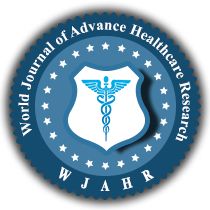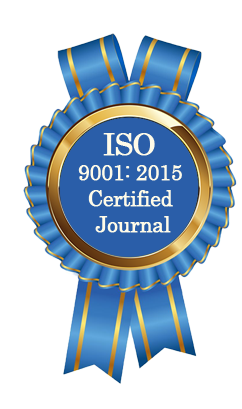| All | Since 2020 | |
| Citation | 105 | 60 |
| h-index | 4 | 4 |
| i10-index | 3 | 2 |
WJAHR Citation 
Login
News & Updation
Best Article Awards
World Journal of Advance Healthcare Research (WJAHR) is giving Best Article Award in every Issue for Best Article and Issue Certificate of Appreciation to the Authors to promote research activity of scholar.
Best Article of current issue
Download Article : Click here
Indexing
Abstract
A STUDY OF ANATOMICAL VARIATIONS OF PARANASAL SINUSES ON COMPUTED TOMOGRAPHY IN CHRONIC SINUSITIS
*Marwa Khaleel Ibrahim and Sura Saadi Hamzah
ABSTRACT
Background: There is a wide range of anatomical variations affecting the nose, paranasal sinuses (PNS) best diagnosed by Computed Tomography (CT). These variations may cause impairment of mucociliary drainage of the PNS resulting in sinusitis. Aims of the study: Study the frequency and types of anatomical variants of PNS on Computed Tomography scan in clinically diagnosed chronic sinusitis patients. Study the association between these anatomical variants and chronic sinusitis. Patients & Methods: A cross sectional study was conducted in the department of Radiology in AL-Shaheed Ghazi Al. Hariri and Baghdad Teaching Hospitals in medical City-Baghdad, from August 2018 to February 2019. All the adult patients with clinical diagnosis of chronic rhino sinusitis for a period of more than 12 weeks, and with persistent chronic rhino sinusitis requiring surgical intervention were included in our study. Based on our inclusion and exclusion criteria a total of 115 patients were involved in the study (61 male & 54 female). Results: From 115 patients in our study, (73%) of them were have one or more anatomical variations of PNS. The most common anatomical variants seen were nasal septal deviation (50.43%) and concha bullosa (46.96%). Statistically significant correlations were found between nasal septal deviation and maxillary sinusitis (p value 0.001), concha bullosa and maxillary sinusitis (p value 0.017), Agger nasi cells and frontal sinusitis (p value 0.001), Haller cells and maxillary sinusitis (p value 0.003) and between Giant ethmoid bulla and anterior ethmoid sinusitis (p value 0.006). Conclusion: By using multislice CT scan we found statistically correlation between existence of some anatomical variations of paranasal sinuses and some pattern of sinusitis, which may lead to defect in the drainage of the sinus secretions and secondary infection. In addition precise knowledge of anatomic variations of the paranasal sinuses is important in chronic rhinosinusitis to prevent possible complications during surgery.
[Full Text Article] [Download Certificate]
